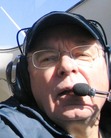Jim Poling Sr.'s Blog, page 48
October 14, 2013
Looking the Other Way While Children Die
Unknown to most Canadians, the United Nations Special Rapporteur on indigenous peoples’ rights is wrapping up a seven-day investigative trip to Canada this week. James Anaya is collecting information for a UN report on how Canada treats its native people. The short answer to that is: The same way it has for the last several hundred years – shamefully.
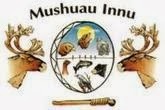 It’s not that simple for the UN, however. Anaya will take the next year to write his report. He visited Ontario, Quebec and the West but not the Maritimes, noteworthy because one of this country’s most disgraceful examples of native plight exists on the East Coast. Gas-sniffing native children continue to die or become brain damaged in Natuashish in Newfoundland-Labrador. This is nothing new. The situation has existed for years. Every once and a while it attracts the attention of the news media and governments get involved by pasting over the horrors with a new wallpaper job. Natuashish is the planned community built 11 years ago to replace Davis Inlet, the previous hell-hole home of the Mushuau Innu. The new village cost the feds $200 million but has not eliminated the social problems that occur when a peoples’ traditional culture is destroyed. Davis Inlet was one horror after the next. One-quarter of the roughly 500 residents had attempted suicide. Alcoholism and gas-sniffing were rampant. Children dying in fires or because of addiction were commonplace. Little changed at the new village of Natuashish. The Labradorian newspaper recently quoted the community mental health therapist as saying he has 28 children who are chronic gas sniffers http://www.thelabradorian.ca/News/Local/2013-10-09/article-3417703/We-want-to-die---no-one-is-listening-to-us/1.
It’s not that simple for the UN, however. Anaya will take the next year to write his report. He visited Ontario, Quebec and the West but not the Maritimes, noteworthy because one of this country’s most disgraceful examples of native plight exists on the East Coast. Gas-sniffing native children continue to die or become brain damaged in Natuashish in Newfoundland-Labrador. This is nothing new. The situation has existed for years. Every once and a while it attracts the attention of the news media and governments get involved by pasting over the horrors with a new wallpaper job. Natuashish is the planned community built 11 years ago to replace Davis Inlet, the previous hell-hole home of the Mushuau Innu. The new village cost the feds $200 million but has not eliminated the social problems that occur when a peoples’ traditional culture is destroyed. Davis Inlet was one horror after the next. One-quarter of the roughly 500 residents had attempted suicide. Alcoholism and gas-sniffing were rampant. Children dying in fires or because of addiction were commonplace. Little changed at the new village of Natuashish. The Labradorian newspaper recently quoted the community mental health therapist as saying he has 28 children who are chronic gas sniffers http://www.thelabradorian.ca/News/Local/2013-10-09/article-3417703/We-want-to-die---no-one-is-listening-to-us/1.
The gas sniffers range in age from nine to early teens, but start as early as age seven. They stagger through the streets every night, laughing and shouting while carrying sniffer bags of gasoline. Damage from deliberately-set fires and graffiti are seen throughout the community. One recent piece of graffiti reads: “We want to die. Nobody’s listening to us.” Chief Simeon Tsha-kapesh was quoted by the newspaper: “If that happened anywhere else in Canada with non-aboriginal kids, I think Canada or the province … would step in and do something about it.” You betcha. However, Canada’s long-standing shame continues to exist in many neglected native communities. A year from now Anaya will issue his UN report. Some Canadians will express outrage. Canadian politicians and bureaucrats will fidget and babble. Then interest will subside, and more children in Natuashish and other Indian communities will stick their faces into plastic gas sniffing bags.
 It’s not that simple for the UN, however. Anaya will take the next year to write his report. He visited Ontario, Quebec and the West but not the Maritimes, noteworthy because one of this country’s most disgraceful examples of native plight exists on the East Coast. Gas-sniffing native children continue to die or become brain damaged in Natuashish in Newfoundland-Labrador. This is nothing new. The situation has existed for years. Every once and a while it attracts the attention of the news media and governments get involved by pasting over the horrors with a new wallpaper job. Natuashish is the planned community built 11 years ago to replace Davis Inlet, the previous hell-hole home of the Mushuau Innu. The new village cost the feds $200 million but has not eliminated the social problems that occur when a peoples’ traditional culture is destroyed. Davis Inlet was one horror after the next. One-quarter of the roughly 500 residents had attempted suicide. Alcoholism and gas-sniffing were rampant. Children dying in fires or because of addiction were commonplace. Little changed at the new village of Natuashish. The Labradorian newspaper recently quoted the community mental health therapist as saying he has 28 children who are chronic gas sniffers http://www.thelabradorian.ca/News/Local/2013-10-09/article-3417703/We-want-to-die---no-one-is-listening-to-us/1.
It’s not that simple for the UN, however. Anaya will take the next year to write his report. He visited Ontario, Quebec and the West but not the Maritimes, noteworthy because one of this country’s most disgraceful examples of native plight exists on the East Coast. Gas-sniffing native children continue to die or become brain damaged in Natuashish in Newfoundland-Labrador. This is nothing new. The situation has existed for years. Every once and a while it attracts the attention of the news media and governments get involved by pasting over the horrors with a new wallpaper job. Natuashish is the planned community built 11 years ago to replace Davis Inlet, the previous hell-hole home of the Mushuau Innu. The new village cost the feds $200 million but has not eliminated the social problems that occur when a peoples’ traditional culture is destroyed. Davis Inlet was one horror after the next. One-quarter of the roughly 500 residents had attempted suicide. Alcoholism and gas-sniffing were rampant. Children dying in fires or because of addiction were commonplace. Little changed at the new village of Natuashish. The Labradorian newspaper recently quoted the community mental health therapist as saying he has 28 children who are chronic gas sniffers http://www.thelabradorian.ca/News/Local/2013-10-09/article-3417703/We-want-to-die---no-one-is-listening-to-us/1. The gas sniffers range in age from nine to early teens, but start as early as age seven. They stagger through the streets every night, laughing and shouting while carrying sniffer bags of gasoline. Damage from deliberately-set fires and graffiti are seen throughout the community. One recent piece of graffiti reads: “We want to die. Nobody’s listening to us.” Chief Simeon Tsha-kapesh was quoted by the newspaper: “If that happened anywhere else in Canada with non-aboriginal kids, I think Canada or the province … would step in and do something about it.” You betcha. However, Canada’s long-standing shame continues to exist in many neglected native communities. A year from now Anaya will issue his UN report. Some Canadians will express outrage. Canadian politicians and bureaucrats will fidget and babble. Then interest will subside, and more children in Natuashish and other Indian communities will stick their faces into plastic gas sniffing bags.
Published on October 14, 2013 05:39
October 8, 2013
Nature's Deadly Deceptives
Out in the autumn woods an explosion of wild mushrooms is another sign of nature’s generosity, and her dangers. Mushrooms flourish because of wetter than normal conditions. I’ve seldom seen so many different varieties and such spectacular colours. There are bright orange mushrooms, deep blacks, and brilliant whites. Mushrooms have a mystical draw. You see one standing white and fleshy in a beam of sunlight illuminating the dark forest floor. It calls seductively: “Come over and pick me. I am delicious.” I am tempted to pick and eat that mushroom. It looks so delicious, but I know better.
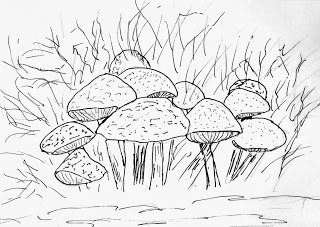 Sketch by Zita Poling Moynan I picked and ate many forest mushrooms years go. That was under the supervision of Emma Tadashore of Sault Ste. Marie, my mother-inlaw, who directed me to pick only the little mushrooms that grew under pine trees. She would examine my harvest, then boil the mushrooms in a pot with a silver coin and a few cloves of garlic. That was back when silver coins still were made of real silver. If the coin and garlic did not turn green, the mushrooms were good to eat. Some people now believe that is just an old wives’ tale. So now I don’t pick any wild mushrooms, especially after reading a New York Times article in which a medical doctor described how he poisoned himself despite following a respected field guide to wild mushrooms. Apparently some of the differences between poisonous and edible mushrooms can be subtle. Ask Nicholas Evans, author of The Horse Whisperer, the popular novel that was turned into a movie starring Robert Redford and Kristin Scott Thomas. He picked mushrooms in the Scottish Highlands, cooked them in butter and parsley, and served them to his wife, brother-in-law, and his brother-in-law’s wife. His wife and brother-in-law were placed on dialysis and wait-listed for kidney transplants. Evans received a new kidney from his adult daughter. This reminds me that despite the considerable time I spend at Shaman’s Rock I know too little about nature. I wish I had spent less time with my nose in computer manuals and more learning about the plant life around me, or the stars in the sky. I was forced to study computer programs to keep current for work. Now I wish I had spent more time studying botany, zoology, and the night skies. These subjects lead right into the reasons for, and purposes of life.
Sketch by Zita Poling Moynan I picked and ate many forest mushrooms years go. That was under the supervision of Emma Tadashore of Sault Ste. Marie, my mother-inlaw, who directed me to pick only the little mushrooms that grew under pine trees. She would examine my harvest, then boil the mushrooms in a pot with a silver coin and a few cloves of garlic. That was back when silver coins still were made of real silver. If the coin and garlic did not turn green, the mushrooms were good to eat. Some people now believe that is just an old wives’ tale. So now I don’t pick any wild mushrooms, especially after reading a New York Times article in which a medical doctor described how he poisoned himself despite following a respected field guide to wild mushrooms. Apparently some of the differences between poisonous and edible mushrooms can be subtle. Ask Nicholas Evans, author of The Horse Whisperer, the popular novel that was turned into a movie starring Robert Redford and Kristin Scott Thomas. He picked mushrooms in the Scottish Highlands, cooked them in butter and parsley, and served them to his wife, brother-in-law, and his brother-in-law’s wife. His wife and brother-in-law were placed on dialysis and wait-listed for kidney transplants. Evans received a new kidney from his adult daughter. This reminds me that despite the considerable time I spend at Shaman’s Rock I know too little about nature. I wish I had spent less time with my nose in computer manuals and more learning about the plant life around me, or the stars in the sky. I was forced to study computer programs to keep current for work. Now I wish I had spent more time studying botany, zoology, and the night skies. These subjects lead right into the reasons for, and purposes of life.
(excerpted from my latest book: Bears in the Birdfeeders)
 Sketch by Zita Poling Moynan I picked and ate many forest mushrooms years go. That was under the supervision of Emma Tadashore of Sault Ste. Marie, my mother-inlaw, who directed me to pick only the little mushrooms that grew under pine trees. She would examine my harvest, then boil the mushrooms in a pot with a silver coin and a few cloves of garlic. That was back when silver coins still were made of real silver. If the coin and garlic did not turn green, the mushrooms were good to eat. Some people now believe that is just an old wives’ tale. So now I don’t pick any wild mushrooms, especially after reading a New York Times article in which a medical doctor described how he poisoned himself despite following a respected field guide to wild mushrooms. Apparently some of the differences between poisonous and edible mushrooms can be subtle. Ask Nicholas Evans, author of The Horse Whisperer, the popular novel that was turned into a movie starring Robert Redford and Kristin Scott Thomas. He picked mushrooms in the Scottish Highlands, cooked them in butter and parsley, and served them to his wife, brother-in-law, and his brother-in-law’s wife. His wife and brother-in-law were placed on dialysis and wait-listed for kidney transplants. Evans received a new kidney from his adult daughter. This reminds me that despite the considerable time I spend at Shaman’s Rock I know too little about nature. I wish I had spent less time with my nose in computer manuals and more learning about the plant life around me, or the stars in the sky. I was forced to study computer programs to keep current for work. Now I wish I had spent more time studying botany, zoology, and the night skies. These subjects lead right into the reasons for, and purposes of life.
Sketch by Zita Poling Moynan I picked and ate many forest mushrooms years go. That was under the supervision of Emma Tadashore of Sault Ste. Marie, my mother-inlaw, who directed me to pick only the little mushrooms that grew under pine trees. She would examine my harvest, then boil the mushrooms in a pot with a silver coin and a few cloves of garlic. That was back when silver coins still were made of real silver. If the coin and garlic did not turn green, the mushrooms were good to eat. Some people now believe that is just an old wives’ tale. So now I don’t pick any wild mushrooms, especially after reading a New York Times article in which a medical doctor described how he poisoned himself despite following a respected field guide to wild mushrooms. Apparently some of the differences between poisonous and edible mushrooms can be subtle. Ask Nicholas Evans, author of The Horse Whisperer, the popular novel that was turned into a movie starring Robert Redford and Kristin Scott Thomas. He picked mushrooms in the Scottish Highlands, cooked them in butter and parsley, and served them to his wife, brother-in-law, and his brother-in-law’s wife. His wife and brother-in-law were placed on dialysis and wait-listed for kidney transplants. Evans received a new kidney from his adult daughter. This reminds me that despite the considerable time I spend at Shaman’s Rock I know too little about nature. I wish I had spent less time with my nose in computer manuals and more learning about the plant life around me, or the stars in the sky. I was forced to study computer programs to keep current for work. Now I wish I had spent more time studying botany, zoology, and the night skies. These subjects lead right into the reasons for, and purposes of life.(excerpted from my latest book: Bears in the Birdfeeders)
Published on October 08, 2013 04:35
September 24, 2013
The Misdirected Michael Douglas Campaign
So Michael Douglas, a favourite actor and a seemingly intelligent and compassionate human being, is upset with the U.S. penal system. His son Cameron is doing a long stretch in a federal prison for drug offences, and his dad doesn’t get to visit him because the lad is in solitary confinement for lengthy periods. The senior Douglas aired his complaints about the penal system at the Sept. 21 Emmy Awards, using phrases such as “non-violent drug addicts” and “happen to have a slip.” The junior Douglas also has been campaigning for attention from prison, writing an essay complaining about the prison system and the harshness against “non-violent drug offenders who are losing much of what is relevant in life.” This PR campaign has garnered sympathy with blog commentary saying how wonderful Cameron is and how hateful the justice system is. The Douglas campaign needs to be balanced with a few facts. Cameron Douglas was given four years for drug distribution. He was part of a criminal system that distributed drugs intended to addict more of our young people. Later his sentence was extended by 4.5 years because he broke prison rules on more than one occasion. One of those was when he convinced an infatuated lawyer to smuggle him drugs in her bra. If the prison system is too harsh on people who take drugs but do not involve anyone else, then surely changes should be made. However, people who distribute drugs knowing that they are helping to destroy other people’s lives deserve everything that the system throws at them. Cameron’s best bet is to do his time productively and stop jerking around with the prison rules. Dad Michael can help his son, and the rest of us, by using his fame and wealth to help attack the roots of the drug culture and drug trade. There might be injustices against those already addicted, but surely most of society’s concern should be for those who will be drawn in and destroyed by the growing curse of illegal drugs.
Published on September 24, 2013 05:20
September 14, 2013
Oh Canada!
Just an observation, but it seems that Canada is a country often too busy to have much interest in its heritage. One example: it’s difficult to find the little bush country cemetery where famous Canadian painter Tom Thomson was first laid to rest. Or the Thomson memorial cairn on Canoe Lake in Ontario’s Algonquin Park.
 Anyone see the Maple Leaf flying? Today I’m on a 14thfloor balcony overlooking much of the city of Barrie. Within view are most of the city’s major buildings, including City Hall, the main court house, the library. Much to view, but something is missing. It takes a while to figure out what: Flags. The Canadian Maple Leaf flag. There is not one to be seen throughout this panorama. None atop any of the buildings, including City Hall. Far off near the horizon there are flashes of red and white but this is from maple leaf banners at a car dealership. Even at street level the flag is not prominently noticeable. There is one at City Hall, kind of small and kept company by two other flags on posts outside the main entrance.
Anyone see the Maple Leaf flying? Today I’m on a 14thfloor balcony overlooking much of the city of Barrie. Within view are most of the city’s major buildings, including City Hall, the main court house, the library. Much to view, but something is missing. It takes a while to figure out what: Flags. The Canadian Maple Leaf flag. There is not one to be seen throughout this panorama. None atop any of the buildings, including City Hall. Far off near the horizon there are flashes of red and white but this is from maple leaf banners at a car dealership. Even at street level the flag is not prominently noticeable. There is one at City Hall, kind of small and kept company by two other flags on posts outside the main entrance.
 The few Maple Leaf flags you do see are often faded and tattered. The greatest use of the country’s national symbol is by businesses flying them in rows or bunches to attract attention. Many of the flags you see do not meet protocols set by the government. More about the national symbol and how to use it properly can be found at http://www.pch.gc.ca/eng/1363356053583/1363342021822 No big deal in the overall scheme of things. Just an observation, eh.
The few Maple Leaf flags you do see are often faded and tattered. The greatest use of the country’s national symbol is by businesses flying them in rows or bunches to attract attention. Many of the flags you see do not meet protocols set by the government. More about the national symbol and how to use it properly can be found at http://www.pch.gc.ca/eng/1363356053583/1363342021822 No big deal in the overall scheme of things. Just an observation, eh.
 Anyone see the Maple Leaf flying? Today I’m on a 14thfloor balcony overlooking much of the city of Barrie. Within view are most of the city’s major buildings, including City Hall, the main court house, the library. Much to view, but something is missing. It takes a while to figure out what: Flags. The Canadian Maple Leaf flag. There is not one to be seen throughout this panorama. None atop any of the buildings, including City Hall. Far off near the horizon there are flashes of red and white but this is from maple leaf banners at a car dealership. Even at street level the flag is not prominently noticeable. There is one at City Hall, kind of small and kept company by two other flags on posts outside the main entrance.
Anyone see the Maple Leaf flying? Today I’m on a 14thfloor balcony overlooking much of the city of Barrie. Within view are most of the city’s major buildings, including City Hall, the main court house, the library. Much to view, but something is missing. It takes a while to figure out what: Flags. The Canadian Maple Leaf flag. There is not one to be seen throughout this panorama. None atop any of the buildings, including City Hall. Far off near the horizon there are flashes of red and white but this is from maple leaf banners at a car dealership. Even at street level the flag is not prominently noticeable. There is one at City Hall, kind of small and kept company by two other flags on posts outside the main entrance. The few Maple Leaf flags you do see are often faded and tattered. The greatest use of the country’s national symbol is by businesses flying them in rows or bunches to attract attention. Many of the flags you see do not meet protocols set by the government. More about the national symbol and how to use it properly can be found at http://www.pch.gc.ca/eng/1363356053583/1363342021822 No big deal in the overall scheme of things. Just an observation, eh.
The few Maple Leaf flags you do see are often faded and tattered. The greatest use of the country’s national symbol is by businesses flying them in rows or bunches to attract attention. Many of the flags you see do not meet protocols set by the government. More about the national symbol and how to use it properly can be found at http://www.pch.gc.ca/eng/1363356053583/1363342021822 No big deal in the overall scheme of things. Just an observation, eh.
Published on September 14, 2013 05:50
September 1, 2013
No Money, No News, No Revolutionary Change
Some Canadian newspapers decided not to publish on Labour Day because projected ad revenue was insufficient to cover that day’s production and delivery costs. Most prominent of the Labour Day dropouts is Toronto’s Globe and Mail whose publisher, Phillip Crawley, was quoted by J-Source.ca http://j-source.ca/ as saying “That’s the truth of the situation, so let’s not pretend it’s any other.” Cancellation of Labour Day newspapers reconfirms two regretful truths: Newspapers are published today to make a profit, not to perform public service. Secondly, the cancer that began eating away at traditional newspapers 30 years ago is in its final stages.

Two statistics support that: nearly one-third of people questioned say they have abandoned a news outlet because it no longer provides the news and information they had grown accustomed to (Pew Research Centre Annual Report on Journalism) http://stateofthemedia.org/. And, newspaper newsroom staff levels in the U.S. were down 30 per cent in 2012 compared with 2000. The newspaper industry’s primary problem is not its death, however. It is its inability to discover a path to rebirth. Newspaper people traditionally have devoted their focus to today, to the exclusion of how they will operate in the future. The path to rebirth has existed for some time. The folks running the business now, and over the past couple of decades, have been too busy, or too myopic, to see it. The newspaper industry requires revolutionary change in attitude and thinking. Many of the attitudes and much of the thinking that existed in newsrooms 50 years ago are still there and obviously out of step in today’s world. The role of editors needs redefining and strengthening. Editors should be the CEOs of the newspapers, not in title or actual job description, but in providing the tone, thinking, bold direction, and spirit of the news enterprise. Other folks, whatever you choose to call them, can provide the important mechanics of the operation. Too many modern-day editors spend their time fiddling with newspaper design, human resources challenges and being sycophants for panic-driven, save-your-ass ideas put forth by bosses whose chief interest is the bottom line. It’s been said tens of thousands of times that consumers of news want content that goes beyond the trivial. Content that tells them how people in their towns, their provinces, their country and the countries affecting them live their lives. Not how to make a perfect ice cream cone. Not simply the he said, she said stuff of governments. Newspapers offer too much thin, trivial content that is easy and cheap to get, while saying that’s what people want. What some people want and all people need is news and information that is specific, impeccably researched and sourced and fact checked. News with perspective and context. News outlets point to deadlines as excuses for generalization, inaccuracies and lack of stories placed in full perspective. The “rush” to get the news out is an anachronism based on a musty and egotistical idea that being first and exclusive is important. Being complete and in context is what counts now, even if it means missing a deadline and not having a ‘scoop.’
Somewhere out there is a generation of journalists with fresh ideas for reviving the news business so it becomes a compelling part of each person's day.

Two statistics support that: nearly one-third of people questioned say they have abandoned a news outlet because it no longer provides the news and information they had grown accustomed to (Pew Research Centre Annual Report on Journalism) http://stateofthemedia.org/. And, newspaper newsroom staff levels in the U.S. were down 30 per cent in 2012 compared with 2000. The newspaper industry’s primary problem is not its death, however. It is its inability to discover a path to rebirth. Newspaper people traditionally have devoted their focus to today, to the exclusion of how they will operate in the future. The path to rebirth has existed for some time. The folks running the business now, and over the past couple of decades, have been too busy, or too myopic, to see it. The newspaper industry requires revolutionary change in attitude and thinking. Many of the attitudes and much of the thinking that existed in newsrooms 50 years ago are still there and obviously out of step in today’s world. The role of editors needs redefining and strengthening. Editors should be the CEOs of the newspapers, not in title or actual job description, but in providing the tone, thinking, bold direction, and spirit of the news enterprise. Other folks, whatever you choose to call them, can provide the important mechanics of the operation. Too many modern-day editors spend their time fiddling with newspaper design, human resources challenges and being sycophants for panic-driven, save-your-ass ideas put forth by bosses whose chief interest is the bottom line. It’s been said tens of thousands of times that consumers of news want content that goes beyond the trivial. Content that tells them how people in their towns, their provinces, their country and the countries affecting them live their lives. Not how to make a perfect ice cream cone. Not simply the he said, she said stuff of governments. Newspapers offer too much thin, trivial content that is easy and cheap to get, while saying that’s what people want. What some people want and all people need is news and information that is specific, impeccably researched and sourced and fact checked. News with perspective and context. News outlets point to deadlines as excuses for generalization, inaccuracies and lack of stories placed in full perspective. The “rush” to get the news out is an anachronism based on a musty and egotistical idea that being first and exclusive is important. Being complete and in context is what counts now, even if it means missing a deadline and not having a ‘scoop.’
Somewhere out there is a generation of journalists with fresh ideas for reviving the news business so it becomes a compelling part of each person's day.
Published on September 01, 2013 07:25
August 13, 2013
The End of the Night Returns
A small but brilliant point of light recently pierced the murky, confused world of book publishing. It’s that changed world where more is better; where volume rules over quality. Random House has started republishing the works of John D. MacDonald the crime novelist who died almost 30 years ago. MacDonald’s writing was at its peak 50 years ago, notably through his Travis McGee series of crime novels. MacDonald had a huge following way back then, but his loyal readers began to pass away and his work began the slide into obscurity. Stephen King, the current master of suspense and horror stories, helped to halt the slide with his published comments about MacDonald, a writer whom he idolized. King called MacDonald’s novel The End of the Night one of the greatest American novels of the 20th century. He ranked it with Arthur Miller’s Death of Salesman. Anything Stephen King has to say about writers and writing catches my attention and I went looking for The End of the Night. It was out of print and the only copies available were too costly.
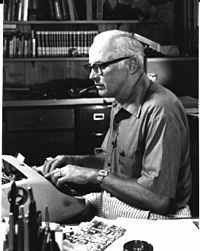 John Dann MacDonald Then I discovered that this year Random House began republishing MacDonald, notably his non-Travis McGee works such as The End of the Night. You don’t have to read far into that novel to understand King’s praise. The storytelling and characterizations are brilliant. His descriptions are so subtle and light that they float into your mind where they leave hard-to-forget images. So unlike much of today’s writing where authors push the reader’s face into their work and leave nothing for the imagination.
John Dann MacDonald Then I discovered that this year Random House began republishing MacDonald, notably his non-Travis McGee works such as The End of the Night. You don’t have to read far into that novel to understand King’s praise. The storytelling and characterizations are brilliant. His descriptions are so subtle and light that they float into your mind where they leave hard-to-forget images. So unlike much of today’s writing where authors push the reader’s face into their work and leave nothing for the imagination.
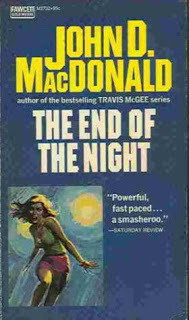 I’m glad Random House has brought John MacDonald back to us, in digital format as well as paper. Incidentally, anyone who knows nothing about John Dann MacDonald probably has seen some of his work. His novel The Executioners was made into the famous movie Cape Fear, starring Gregory Peck and Robert Mitchum in 1962, then Robert De Niro and Nick Nolte in a 1991 remake.
I’m glad Random House has brought John MacDonald back to us, in digital format as well as paper. Incidentally, anyone who knows nothing about John Dann MacDonald probably has seen some of his work. His novel The Executioners was made into the famous movie Cape Fear, starring Gregory Peck and Robert Mitchum in 1962, then Robert De Niro and Nick Nolte in a 1991 remake.
 John Dann MacDonald Then I discovered that this year Random House began republishing MacDonald, notably his non-Travis McGee works such as The End of the Night. You don’t have to read far into that novel to understand King’s praise. The storytelling and characterizations are brilliant. His descriptions are so subtle and light that they float into your mind where they leave hard-to-forget images. So unlike much of today’s writing where authors push the reader’s face into their work and leave nothing for the imagination.
John Dann MacDonald Then I discovered that this year Random House began republishing MacDonald, notably his non-Travis McGee works such as The End of the Night. You don’t have to read far into that novel to understand King’s praise. The storytelling and characterizations are brilliant. His descriptions are so subtle and light that they float into your mind where they leave hard-to-forget images. So unlike much of today’s writing where authors push the reader’s face into their work and leave nothing for the imagination. I’m glad Random House has brought John MacDonald back to us, in digital format as well as paper. Incidentally, anyone who knows nothing about John Dann MacDonald probably has seen some of his work. His novel The Executioners was made into the famous movie Cape Fear, starring Gregory Peck and Robert Mitchum in 1962, then Robert De Niro and Nick Nolte in a 1991 remake.
I’m glad Random House has brought John MacDonald back to us, in digital format as well as paper. Incidentally, anyone who knows nothing about John Dann MacDonald probably has seen some of his work. His novel The Executioners was made into the famous movie Cape Fear, starring Gregory Peck and Robert Mitchum in 1962, then Robert De Niro and Nick Nolte in a 1991 remake.
Published on August 13, 2013 06:36
July 15, 2013
Ozzie On The Road Again (Finale)
The best part of travelling is getting home, settling into your favourite chair and reflecting on the wonderful things you saw and did.
I'm in my favourite deck chair looking out over El Toyonal and running the once-in-a-lifetime road trip through my mind's projector. There's much for me to reflect on after one month covering 6,622 miles through two countries, one large province and 15 states. We travelled though mountains, across high plains and deserts, through boreal forests and rested for a while in lake country.
 Reflecting
Reflecting
The lives of people we observed were as varied as the geography. But on reflection, they are in many ways much the same. They have the same aspirations, and the same types of problems.
The most prominent and difficult problem is the political system - in both Canada and the United States. Everywhere we travelled we saw the results of decisions made by bureaucrats and politicians trying to please everyone. Decisions based on fear of being unpopular.
We passed through areas in both countries where governments are bankrupt or teetering on the edge. Places where infrastructure is falling apart, where police services are being cut back, where recreational areas are closed and places where kids are not getting the education that is their right.
There is not enough money to do everything and the political systems are too polarized to form the team effort needed to create innovative solutions.
But what do I know, I'm just a dog. An Alaskan Malamute happy to be back in the hills beside the Pacific, where it's refreshingly cool.
Thanks to Mom, Steve, John, Marcus for bringing me along.
And thanks to folks who came along through my blogging. I'm turning it back over the Old Guy now with the hope that he won't screw it up.
OZ
Some Bonus Snaps Glen Canyon Dam on the Colorado
Glen Canyon Dam on the Colorado
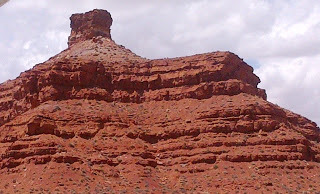 Red Rock Monuments Everywhere
Red Rock Monuments Everywhere
 My Favourite Perch
My Favourite Perch
I'm in my favourite deck chair looking out over El Toyonal and running the once-in-a-lifetime road trip through my mind's projector. There's much for me to reflect on after one month covering 6,622 miles through two countries, one large province and 15 states. We travelled though mountains, across high plains and deserts, through boreal forests and rested for a while in lake country.
 Reflecting
Reflecting The lives of people we observed were as varied as the geography. But on reflection, they are in many ways much the same. They have the same aspirations, and the same types of problems.
The most prominent and difficult problem is the political system - in both Canada and the United States. Everywhere we travelled we saw the results of decisions made by bureaucrats and politicians trying to please everyone. Decisions based on fear of being unpopular.
We passed through areas in both countries where governments are bankrupt or teetering on the edge. Places where infrastructure is falling apart, where police services are being cut back, where recreational areas are closed and places where kids are not getting the education that is their right.
There is not enough money to do everything and the political systems are too polarized to form the team effort needed to create innovative solutions.
But what do I know, I'm just a dog. An Alaskan Malamute happy to be back in the hills beside the Pacific, where it's refreshingly cool.
Thanks to Mom, Steve, John, Marcus for bringing me along.
And thanks to folks who came along through my blogging. I'm turning it back over the Old Guy now with the hope that he won't screw it up.
OZ
Some Bonus Snaps
 Glen Canyon Dam on the Colorado
Glen Canyon Dam on the Colorado Red Rock Monuments Everywhere
Red Rock Monuments Everywhere My Favourite Perch
My Favourite Perch
Published on July 15, 2013 15:53
July 13, 2013
Ozzie On The Road Again - 8
Most folks come to Las Vegas for the gambling. Not our little band of travellers. We come to a boiling parking lot in the warehouse district a mile and a half from the throbbing heart of The Strip.
It is hot enough to fry a burger pattie on the asphalt at the rear of the lot. The parking area serves two newish warehouses not unlike others you would find away from the downtown core in any North American city. The only thing different about them is they are a desert sand colour, presumably to reflect the scorching sun.
The far corner of the one building sports two glass windows, a glass door and a clever logo indicating that inside is Acrylic Tank Manufacturing. It seems an odd place for an aquarium company considering that I haven't scented a drop of water in the last 100 miles.
Life is full of surprises, however, even for a well-educated Alaskan Malamute such as me. They not only make custom aquariums inside, they film the work and turn it into Tanked, a popular kids reality show.
Tanked follows two real-life brothers-in-law who run the family aquarium manufacturing business. They will built any size of shaped aquarium that a customer requests. They create them in the shape of cars, pyramids, phone booths or whatever and leave Tanked viewers amazed and laughing.
There's a little gift ship inside the plant and the guy running it tells me it receives up to 1,000 visitors a day. Las Vegas is a production town for a bunch of reality shows and tours of the production locations have become a business.
He explains that millions of kids watch Tanked on Animal Planet TV because their parents don't want them watching the violence and sex of regular TV channels. So any adult who brings a kid to Las Vegas and asks "what would you like to see?" ends up out here in the warehouse district.
It's a neat place to visit and there are no one-armed bandits there to pick your pockets.
OZ
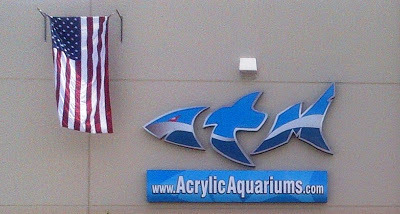 The Place to Get Tanked in Vegas
The Place to Get Tanked in Vegas
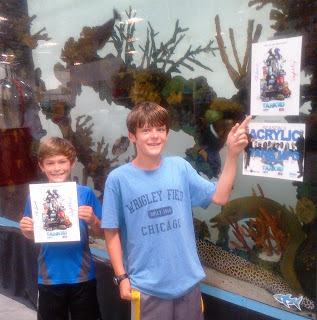 Marcus and John Outside The Tank
Marcus and John Outside The Tank
 How About an Aquarium Like This?
How About an Aquarium Like This?
It is hot enough to fry a burger pattie on the asphalt at the rear of the lot. The parking area serves two newish warehouses not unlike others you would find away from the downtown core in any North American city. The only thing different about them is they are a desert sand colour, presumably to reflect the scorching sun.
The far corner of the one building sports two glass windows, a glass door and a clever logo indicating that inside is Acrylic Tank Manufacturing. It seems an odd place for an aquarium company considering that I haven't scented a drop of water in the last 100 miles.
Life is full of surprises, however, even for a well-educated Alaskan Malamute such as me. They not only make custom aquariums inside, they film the work and turn it into Tanked, a popular kids reality show.
Tanked follows two real-life brothers-in-law who run the family aquarium manufacturing business. They will built any size of shaped aquarium that a customer requests. They create them in the shape of cars, pyramids, phone booths or whatever and leave Tanked viewers amazed and laughing.
There's a little gift ship inside the plant and the guy running it tells me it receives up to 1,000 visitors a day. Las Vegas is a production town for a bunch of reality shows and tours of the production locations have become a business.
He explains that millions of kids watch Tanked on Animal Planet TV because their parents don't want them watching the violence and sex of regular TV channels. So any adult who brings a kid to Las Vegas and asks "what would you like to see?" ends up out here in the warehouse district.
It's a neat place to visit and there are no one-armed bandits there to pick your pockets.
OZ
 The Place to Get Tanked in Vegas
The Place to Get Tanked in Vegas Marcus and John Outside The Tank
Marcus and John Outside The Tank How About an Aquarium Like This?
How About an Aquarium Like This?
Published on July 13, 2013 21:35
July 12, 2013
Ozzie On The Road Again - 7
A silly rule blocked the path to getting the photo of the decade today. I couldn't get in to the Four Corners Monument, so missed the chance to stand in four different states at the same time. Four Corners is where the state lines of Colorado, Utah, Arizona and New Mexico intersect. It is the only place in the United States where this happens. The No Dogs Allowed signs were up all over the place, so people with cameras had to settle for snaps of people standing in two states, then bending over to touch the other two with their hands. How contrived! Four paws would have done it nicely, one paw in each state. Even worse, the Navajo Fry Bread stands were inside the No Dog Zone. Navajo Fry Bread is the best treat anywhere in the southwest. The Four corners is Navajo country, seemingly stretching forever across the tops of Arizona and New Mexico and the bottoms of Colorado and Utah. The Navajo are the largest native tribe in the U.S. and have their own government which includes a police force. Despite no fry bread and no paws in four states, it was a wonderful day. The scenery here is spectacular. The canyonlands range in colour from red, to brown, black, white and grey. Throw in some green for the pinon bushes and some blue for the sage. We went through Monument Valley and were awed at the different formations of rock projecting high into the sky above the high desert flatlands. The Glen Canyon Dam creating Lake Powell is a great stop with its modern visitor centre.
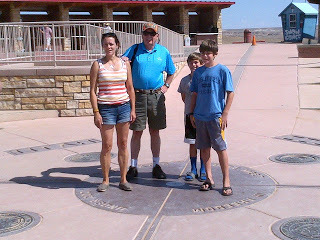 The gang (minus Oz) at Four Corners
The gang (minus Oz) at Four Corners
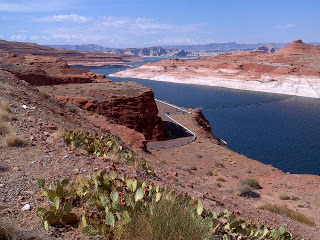 Glen Canyon
Glen Canyon
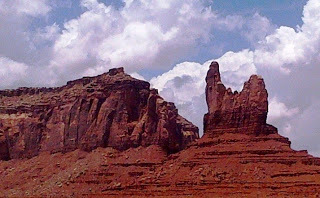 Finger to the Sky
Finger to the Sky
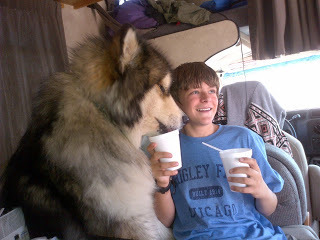 A Snow Cone in a Cup, No Fry Bread
A Snow Cone in a Cup, No Fry Bread
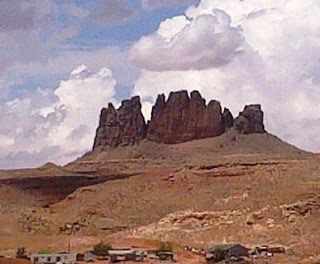 Living Beneath the Giant
Living Beneath the Giant
 The gang (minus Oz) at Four Corners
The gang (minus Oz) at Four Corners Glen Canyon
Glen Canyon Finger to the Sky
Finger to the Sky A Snow Cone in a Cup, No Fry Bread
A Snow Cone in a Cup, No Fry Bread Living Beneath the Giant
Living Beneath the Giant
Published on July 12, 2013 21:55
July 11, 2013
Ozzie On The Road Again - 6
Finally found a couple tourist sites where dogs are allowed and have the same privileges as humans. Both were nerve-wracking to say the least.
Started the day with a visit to Traders Rendezvous, a mountain shop on the main street of Gunnison, Colorado. They welcomed me like a visiting dignitary. However, I quickly discovered that the shop is all about selling animal bones, skins and related trinkets.
The place is stacked with piles of elk, deer, moose and other animal antlers. Also lots of taxidermy; stuffed deer, wolves, buffalo all with glassy eyes. Very creepy and I began to suspect the folks who run the place had an ulterior motive for inviting me in.
There is also a gun section there and the Old Guy discovered an ancient Winchester 38-55 like his grandfather used to carry. That launched him into a long, tedious series of ancient hunting tales.
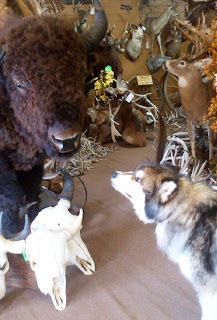 What a Spooky Spot Farther south in Telluride, the famous ski resort, I was invited to go up the mountain in the cable car. Great views, but not a great ride for a dog who loves his four feet firmly on terra firma.
What a Spooky Spot Farther south in Telluride, the famous ski resort, I was invited to go up the mountain in the cable car. Great views, but not a great ride for a dog who loves his four feet firmly on terra firma.
Telluride is built into a box canyon so the only way out of the place is the way you came in. But the views are wonderful. Every which way you turn you see a row of jagged peaks, or a colossal single mountain or a colorful row of red rimrock.
Heading south from Telluride we went through a pass at 10,000 feet elevation, and then kept climbing. I was starting to breathe shallow.
Into Arizona and New Mexico tomorrow.
OZ
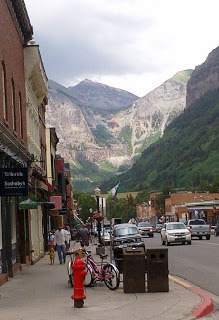 Main Street Telluride
Main Street Telluride
 Going up, up, up
Going up, up, up
Started the day with a visit to Traders Rendezvous, a mountain shop on the main street of Gunnison, Colorado. They welcomed me like a visiting dignitary. However, I quickly discovered that the shop is all about selling animal bones, skins and related trinkets.
The place is stacked with piles of elk, deer, moose and other animal antlers. Also lots of taxidermy; stuffed deer, wolves, buffalo all with glassy eyes. Very creepy and I began to suspect the folks who run the place had an ulterior motive for inviting me in.
There is also a gun section there and the Old Guy discovered an ancient Winchester 38-55 like his grandfather used to carry. That launched him into a long, tedious series of ancient hunting tales.
 What a Spooky Spot Farther south in Telluride, the famous ski resort, I was invited to go up the mountain in the cable car. Great views, but not a great ride for a dog who loves his four feet firmly on terra firma.
What a Spooky Spot Farther south in Telluride, the famous ski resort, I was invited to go up the mountain in the cable car. Great views, but not a great ride for a dog who loves his four feet firmly on terra firma.Telluride is built into a box canyon so the only way out of the place is the way you came in. But the views are wonderful. Every which way you turn you see a row of jagged peaks, or a colossal single mountain or a colorful row of red rimrock.
Heading south from Telluride we went through a pass at 10,000 feet elevation, and then kept climbing. I was starting to breathe shallow.
Into Arizona and New Mexico tomorrow.
OZ
 Main Street Telluride
Main Street Telluride
 Going up, up, up
Going up, up, up
Published on July 11, 2013 20:09

